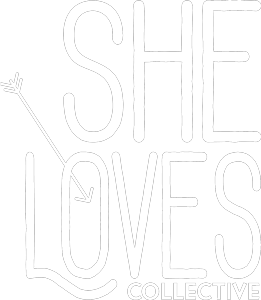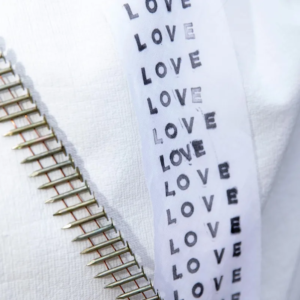CUARTO BLANCO: Q&A with SheLoves Collective
![]() 1] Please tell us what motivated you to plan & execute “The Rifles My Ancestors Didn’t Have” [december 2020 art happenings (peaceful protests) via processions, at various public spaces in Los Angeles, to raise awareness about the Nagorno-Karabakh war] and describe the awareness that has been raised as a result.
1] Please tell us what motivated you to plan & execute “The Rifles My Ancestors Didn’t Have” [december 2020 art happenings (peaceful protests) via processions, at various public spaces in Los Angeles, to raise awareness about the Nagorno-Karabakh war] and describe the awareness that has been raised as a result.
Adrineh Bagdassarrian (Founder) – Seeing and feeling the desperation of a community and country that had no support from the world. The desperate need to showcase and highlight this cause to a non-Armenian Community. She loves collectively deciding to speak up through art. We decided to raise awareness via non-Armenian media, and it worked.
Ani Nina Oganyan (Project Manager/Producer) – As a collective we strive to present works that are with the times, particularly topics that surround our community. In the case of “TROADH”- the attacks on the Armenian enclave of Artsakh, brought on by Azerbaijan- with the backing of Turkey, directly affected all levels of our community. When 90% of our collective sisters identify as Armenian- many of which are direct decedents of Armenian genocide survivors from the 1915 massacres- executed by the Ottoman Turks, we owe it to ourselves to put this on the forefront and bring light to what injustices our community is facing. One of the largest Armenian diasporas live in the Los Angeles area- which is where we collective is based, and with roughly 10 million Armenians living all over the world due to the repercussions of centuries of genocide, war, displacement…we owe it to every Armenian.
Nelly Achkhen (Co-Founder) – We wanted to make our own memories alive and scream at the unjust war against Artsakh and Armenians. We recognize the power of our diaspora’s existence, resilience and our connection as a collective to come together in a peaceful protest and march for justice.
2] You describe “love” as the foundation on which your collective was formed, has that concept always been the driving force behind your inspiration or did an awakening occur at some point to get there?
Adrineh Bagdassarrian (Founder) – Power of Love is always a big source of inspiration. It motivates and it makes us push harder, we become more determined and driven with purpose. We believe art and love contain healing powers. Seven years ago, while working on a huge community activated art project we saw how the love and the support of the community towards us and their belief in bigger causes helped achieve a huge successful art show. We say specifically how the women in our community loved us so much that they reached out and helped collect 1000 ’s of recycled material that was needed for that project. Their belief and efforts were their way of showing love back.
Ani Nina Oganyan (Project Manager/Producer) – I find that the driving force behind each project, installation, piece of art changes or evolves from one greater inspiration- but at the forefront of creating there has to be love to drive you to create. You have to love it to do it. With this piece, that’s centered around war and a time when our culture and identity are being questioned and threaten it is very difficult to lead with love, as that is something so far from it. However, the love for our nation, our people, mankind- that is the love that drove a piece like TROADH.
Nelly Achkhen (Co-Founder) – The Women’s March was a worldwide protest on January 21, 2017, the day after the inauguration of President Donald Trump. A month after the largest single-day protest in U.S. history, She Loves exhibit, February 17, 2017, provided a platform for female artists to start a dialogue with the viewer and hence a dialogue with their community on the subject of love. With TROADH, we wanted to move with love and exhibit peace in public. We wanted to touch people and share our trauma and empathy emerged in our community. Our performance was peaceful as it visibly was it was also a painful reminder of a bloody conflict thousands of miles away in the region of Nagorno-Karabakh in Azerbaijan (known as Artsakh by Armenians), one that has left thousands dead and centuries of Armenian cultural legacy imperiled.
3] Was art as a means of “social change” something that you had to evolve (or build the courage) to do OR was it an innate part of your creative vision/ process from the start?
Adrineh Bagdassarrian (Founder) – We have evolved and became more specific about art as means of social change. For us art for social change was art with a vision and we saw this as the easiest way to impact people’s lives and all the positive changes we wanted to see happen in the world. With this being a specific goal we realized we could raise consciousness and make changes first in ourselves and then our society and eventually the world. The vision to create a more just world was always with us; it just became more specific as we became more aware of the world around us.
Ani Nina Oganyan (Project Manager/Producer) – Social change has always been the driving force behind She Loves as a collective, and again that social change evolves with each project, what the hot topic is, or what needs to be touched on in that time. Art can be beautiful, art can be irrational, art can do a lot and it could do nothing- it’s the spectator who decides, just as each individual artist may have their own goals and general purpose, weather to create or encourage social change or not- but when we come together to work on something, there is always a social change agenda. It may not be a huge change, revolutionary or whatever- but it is our mission.
Nelly Achkhen (Co-Founder) – A sense of universality erupts in all our recent works and projects. We are one collective consciousness and we believe in for change to happen we need to approach it with open mind. Activism with an art focused mission, She Loves collective is a movement for empowering women emphasizing that women have a voice and it needs to be heard. Times are changing, and these are unique moments in time where the collective has been tackling all topics and collaborating remotely with artists fighting against domestic violence to create impact through social art activations.
4] In an ever changing world, does fear of political correctness hinder your mission in any way?
Adrineh Bagdassarrian (Founder) – We have no fears!!! We pick projects and determine goals and the purpose, and we figure out the best way possible to achieve purpose. When our passion matches our purpose, we can do no wrong.
Ani Nina Oganyan (Project Manager/Producer) – Sure political correctness could be scary- but it could also lead to learning and growing. I don’t believe anything could ever be 100% politically correct across the globe- how boring. An ever-changing world is a beautiful thing. There is so much to learn from, to evolve, to make better, chances to take- but fear of acceptance, to be understood, fear of hurting or being harmful…those are fears I think we all have, but as artists we must push through that fear in order to create something that really pushes the boundaries or raises questions.
Nelly Achkhen (Co-Founder) – Art is liberating and serves as a powerful tool to face the current problems that society is dealing with. Unfortunately, there are still some existing galleries that invite only male artists to participate in curated exhibitions. As part of our efforts, the collective promises to carry out a mission to help women artists be recognized in the contemporary art world.
5] Do you believe that organizing a gender specific art collective is different from a gender neutral option? In what ways?
Adrineh Bagdassarrian (Founder) – We don’t see ourselves as gender specific. We are always open and in collaborations with all genders.
Ani Nina Oganyan (Project Manager/Producer) – The modern-day woman is not done creating her own opportunities. I think it is yet another challenge we must face, and we are doing it beautifully. In the case of our collective, we actually work with a variety of talented and hardworking individuals. I do not see us as a gender specific collective- as our members, supporters, collaborators really vary.
Nelly Achkhen (Co-Founder) – Our allyship with collaborators is based on specific mission tied to the common purpose related to the moment. We take these stories, these instances and we build something new. The truth relies on the human connection that powers these art experiences and projects.
6] Do you have a specific & highly impactful personal example of “artists supporting artists” that you can share to inspire the art community?
Adrineh Bagdassarrian (Founder) – Unfortunately, none comes to mind- which is why I founded She Loves Collective- to make these impactful moments happen.
Ani Nina Oganyan (Project Manager/Producer) – I love seeing how our past installations, performance, and activations come together. They really are a group effort- from the children of some of our members coming out to help us prepare, to the love and support we get from their parents, spouses, partners. Our artists network with each other, support and uplift one another- they even collaborate outside of the collective and that is what this is all about- connecting and growing together. With TROADH- we worked closely with over 10 artists outside of our collective- they all supported us and wanted to be a part of the change!
Nelly Achkhen (Co-Founder) – It has been a rough road establishing ourselves within our own community as a first Armenian women’s collective on the west of the Mississippi despite all our efforts. However, we’ve had many individual supportive artists, photographers, videographers who believe in our goal, support us from the get go and and offer to volunteer their time to assist our group on projects.
7] How has utilizing “non-traditional” sites or venues driven your happenings / performance / installation exhibits?
Adrineh Bagdassarrian (Founder) – We find formal venues the thing of a past. Site specific art projects dominate the world at the moment and we would very much like to be up in that domination zone. Utilizing nontraditional spaces comes with its many challenges and we take these challenges and try to use them to our benefit.
Ani Nina Oganyan (Project Manager/Producer) – Often the locations we worked with were happenstance- but I think each project calls upon specificalities. That can be urban, natural, domestic- it depends. But depending on the piece the locational element plays a very big role. When we did Finding Her- we were influenced by the hosts of Akanjogh (an Armenian Feminist podcast). There were PSA flyers plastered on the Yerevan metro that had horrible sayings about how to treat women- absolutely disgusting- and these two brave women stickered positive messages over them. In solidarity we performed Finding Her on the metro in LA, we read strong feminist poetry and writings, and beat wool at one of the stops (commentary on the PSA quote). The Broad Museum and LA City Hall- for our first installation of TROADH, we wanted to start in front of this grand museum which houses the works of world-renowned artists. The imagery was empowering but it was also a call to our community that here we stand, 15 female Armenian artists- fighting to be heard and seen, rebels with a cause. Then our second installment of TROADH- we wanted to continue with an outdoor space for everyone’s safety during COVID, but also a space that incorporated elements of war. For example, under a freeway overpass- so that the sounds of the cars above mimicked that of bombs dropping, or the sound and element of water from the LA river carried our hopes and dreams downstream, the urban cityscape in the distance, bodies passing by just like the mainstream media passed by without notice or coverage.
Nelly Achkhen (Co-Founder) – For TROADH, we were adamant in finding the perfect location with an LA backdrop for the audience to recognize that we are LA-based collective. Thus, diaspora and the white bridge in At Water Village, was the powerful symbolic visual that bridge our people together no matter where they were displaced in the world. Our hearts beat stronger together. Also, under the bridge, the sound of cars passing by gave the perfect sound effects of bombs droppings from the video projection. During our first peaceful protect, we walked from The Broad Museum to the city hall where people gather to protest. The significance of the spaces is very important in relationship to the topic.
8] Do you have any upcoming projects /events / shows / news that we can look forward to?
Adrineh Bagdassarrian (Founder) & Nelly Achkhen (Co-Founder) – We have an upcoming project site Roots + Relics
Ani Nina Oganyan (Project Manager/Producer) – Well, our next big agenda item was to become more established and registered as an organization, but due to COVID we had to put that on hold. Then with the war on Artsakh- we worked quickly leading us to TROADH. And now the repercussions of the war and the loss of ancestral Armenian lands to Turks has inspired yet another project- it is a working title and a working installation centered around genocide remembrance.
We hope to touch on generational trauma, loss, preserving culture, relics, and stories of survival.


